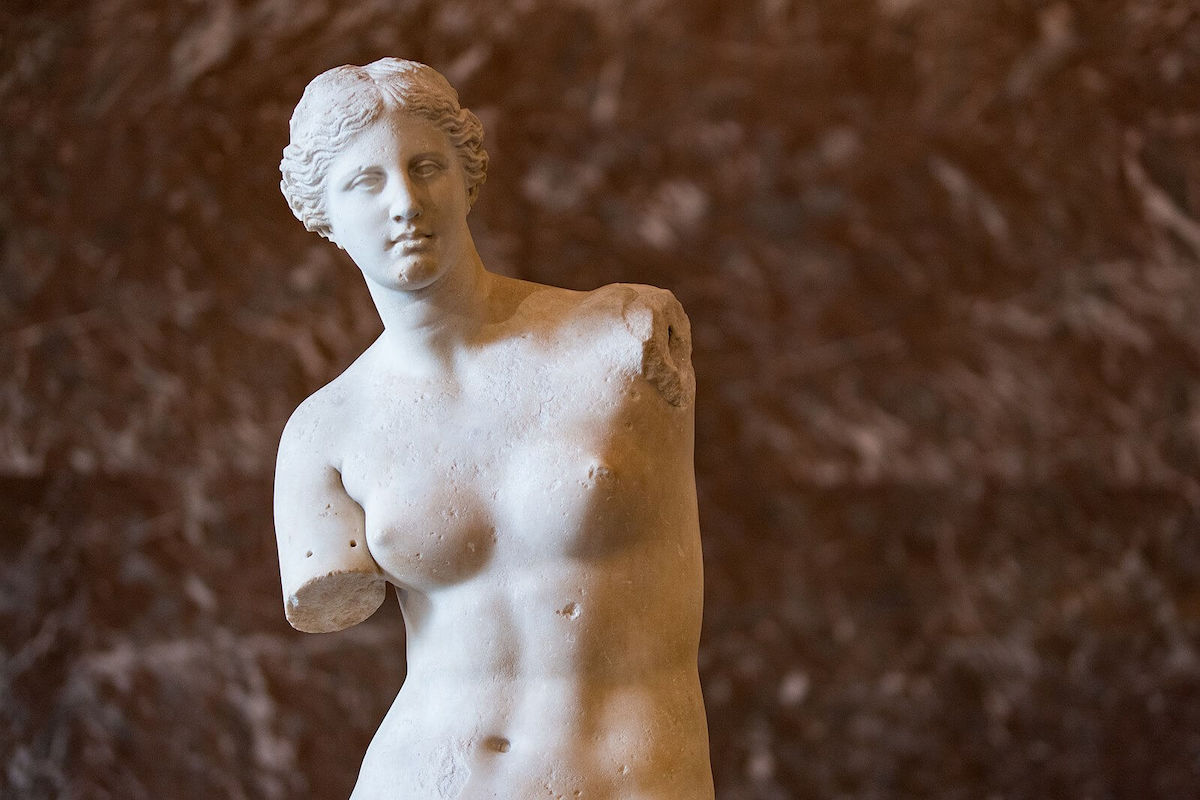If someone were to be asked to name a statue that represents the universal canon of beauty, the answer would probably be: the Venus de Milo. With sinuous features, an impenetrable gaze and a mysterious story, this one marble marvel over time it has become one of the most loved and appreciated works of art in the world. Its "modern history" began on April 8, 1820, when it was discovered by pure chance by a farmer on the island of Milo, in Cyclades in Greece, from there he came then in France, Louvre, where today it is considered one of the flagship works of the museum that every year attracts millions of visitors (together with the Gioconda and Nike of Samothrace).
History of the Venus de Milo
The Venus de Milo is a statue in Parian marble about two meters from XNUMXnd century BC, attributed to the sculptor Alexander of Antioch. April 8 of 202 years ago, digging behind a wall, the farmer Yorgos Kentrotas, found a statue that depicted a bust of woman without arms. This was located in a niche, in the area in front of an ancient theater. Shortly thereafter, thanks also to the officer of the French navy Olivier Voutier, who was already carrying out excavations on the island, the lower part of the statue was also found, namely the veiled legs. Voutier immediately understood the magnificence of the work and was determined to take it with him to France. The purchase of what would later become known as the Venus de Milo did not materialize immediately. This was only possible thanks to the mediation of the admiral Jules Dumont of Urville and Marquis of Rivière, the then French ambassador to the Ottomans.
Paid approx 750 francs, in May 1820 the Venus landing in Constantinople (where the Marquis was). The following October he left for Toulon and came to Paris only in February 1821. The Marquis of Rivière had in fact decided to donate the work to the King of France, Louis XVIII. The latter finally decided to donate it to Louvre, where it has been kept for 201 years now.
A work shrouded in mystery
The halo of mystery that revolves around the Venus de Milo has always made it very charming. The absence of the arms and other details actually makes it impossible to establish the sculpted scene. If she had had a arc or an amphora might have been the goddess of the hunt Artemide. The discovery next to the statue of a hand holding (perhaps) one apple, could suggest that this is the episode of the judgment of Paris, the Trojan hero who gave the golden apple to Afrodite, indicating her as the most beautiful of all goddesses. The apple could also be a reference to the island, since the ancient name "Lying"Was similar to" mêlon "(or" apple "). Of course it could also be Amphitrite, goddess of the sea and bride of Poseidon, highly revered in Milo. However the half-nakedness and the resemblance to other statues of the goddess (such as theAphrodite of Capua), make it plausible that it is a Venus.
The Venus de Milo is the ideal of classical beauty that has inspired many artists. Among the most striking examples are the Marianne di DeLacroix neither "Freedom that guides the people"(1830) or the"Venus de Milo with drawers"of Salvador Dali (1936). The Hellenistic statue has also become a real one over the years pop icon. She is in fact mentioned in several films (The Dreamers), TV series (Twin Peaks), movies and animated series (Hercules or Simpson) or songs ("Venus" by Television). Happy "birthday" Venus de Milo, continues to charm every visitor to the Louvre and inspire artists from all over the world.
Featured photo: © Nan Palmero - Wikimedia Commons (CC BY 2.0).





